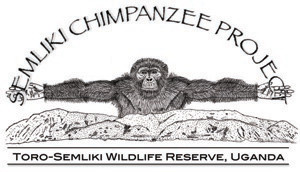Why Study Dry-Habitat Chimpanzees?
Jane Goodall began her pioneering study of chimpanzees at Gombe in 1960; it is still going strong today. Toshisada Nishida started his research at Mahale in 1965, and despite his recent death, the project shows no sign of slowing. There have been 120 or more chimpanzee research initiatives over the years, but not much more than a dozen are active today. Still, with a dozen other research initiatives churning out data on chimpanzees, you may wonder whether the Semliki Chimpanzee Project is worthwhile.
Yes. If for no other reason, research is the most powerful conservation force at Semliki and elsewhere; researchers discourage poaching, deforestation and government neglect. Because scientists cannot understand the behavior and ecology of a species without studying them in habitats unaltered by human interference, researchers have a powerful motivation to keep their study subjects alive and habitat destruction to a minimum. While in theory local and national governments, conservation agencies and conservation officials are responsible for preserving parks and conservation areas, these agencies often have diverse duties, some of which may distract them from conservation tasks. It hurts that they are consistently underfunded, as national parks are in the U.S. Researchers, on the other hand, must make conservation their first priority; they cannot carry on if they lose their study subjects. Furthermore, the presence of researchers in the forest deters both poaching and illegal logging, in part because encroachers know they are concerned about wildlife. Researchers go into the forest almost daily to gather their data, and therefore they monitor the habitat more closely than officials can. Local authorities sometimes have mixed motivations; acquaitances and sometimes even relatives might be the very poachers and illegal loggers who are destroying the forest and its wildlife. As outsiders, researchers are free from these sorts of social pressures. If nothing else is accomplished by SCP—and we hope to accomplish much more—it has decreased habitat destruction and chimpanzee deaths at Semliki.
There are important scientific reasons to study chimpanzees at Semliki. Dry-habitat chimpanzees are of enormous relevance to human paleontology and great ape socioecology. Most Pan troglodytes study sites—in fact, all but two others—are in closed canopy or seasonal forests, which means the selection pressures that act on dry-habitat apes, and their response to such challenges, are poorly known. The Toro-Semliki Wildlife Reserve is among the driest chimpanzee study sites, and it is this feature that led the Prof. Hunt and his team to initiate fieldwork there in 1996. Human paleontology can benefit by the study Semliki chimpanzees because their habitat is similar to that of the earliest human ancestors, the australopiths. Chimpanzees presumably respond, anatomically, physiologically and behaviorally, to dry habitats in ways that are similar to those earliest humans.
Semliki chimpanzees display a number of unusual features related to this unusual habitat: they hunt rarely; they exploit few savanna resources; their community numbers are, counterintuitively, higher than at other sites; and despite the widespread availability of subterranean food items in their habitat, they include none in their diet. While their habitat is open, they appear no less arboreal than other populations.
Preliminary observations and well-established socioecological theory lead us to believe that open habitats impose unusual selection pressures on nearly every aspect of chimpanzee behavior and morphology, affecting foraging, ranging, dental morphology, facial robusticity, canine size, intracommunity and intercommunity aggression, social dominance, patrolling, hunting, kin-selection, locomotion, posture, hormone profiles and genetics. We will focus particularly on issues related to proto- and early hominin evolution, such as the evolution of bipedalism.
The dispersed resources and consequent need for long distance travel at Semliki mean that the social behavior of dry-habitat chimpanzees must adapt in unique ways. One of those ways appears to be a reduction in interpersonal violence (Hunt, 1998; Hunt and McGrew, 2002; Samson and Hunt, 2014). Chimpanzees are perhaps the most violent mammal; humans less so. Perhaps the origin of a less violent, more cooperative society is in the dispersed resources of dry habitats.

